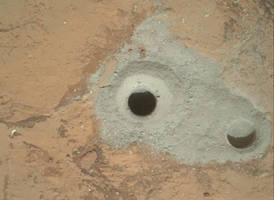Curiosity Finally Drills Into Martian Terrain

IRVINE, Calif. – Since its landing in August, NASA JPL's rover has yet to utilize its drilling arm to full capacity. However, that all changed on February 9, 2013. Mars Rover Curiosity officially bore its first hole into the Martian surface.                               Â
Seen as the rover's most complex device, the robotic drilling arm penetrated what is identified as a "flat, veiny rock" to collect its first samples. This collection marks the first sampling of any rover on Mars. Helping to ensure the success of this drilling mission, FUTEK Advanced Sensor Technology Inc. designed and developed two customized sensors for this exact moment. Within the drill sits a Thru-Hole Load Cell FUTEK manufactured to measure the forces of the drill bit as it bores into the Martian terrain. Meanwhile, a Multi-Axial Sensor sits at the base of the rover's robotic arm monitoring the arm's maneuvers. This three-component sensor provides feedback to the operating device identifying the levels of torsion and force applied to the arm.
These precision instruments led to a 0.63-inch wide and 2.5-inches deep hole in the Martian bedrock. This particular location showed evidence of water/moisture saturation. Thus, FUTEK awaits Curiosity's analysis of the rock sample over the next few days to confirm this theory. Ground controllers will guide Curiosity through multiple stages of investigation within the rover's Collection and Handling for In-Situ Martian Rock Analysis (CHIMRA) device.
FUTEK's entire team waits in anticipation as the samples process. We again thank NASA JPL for their partnership, and are immensely pleased with the success of Curiosity thus far.




